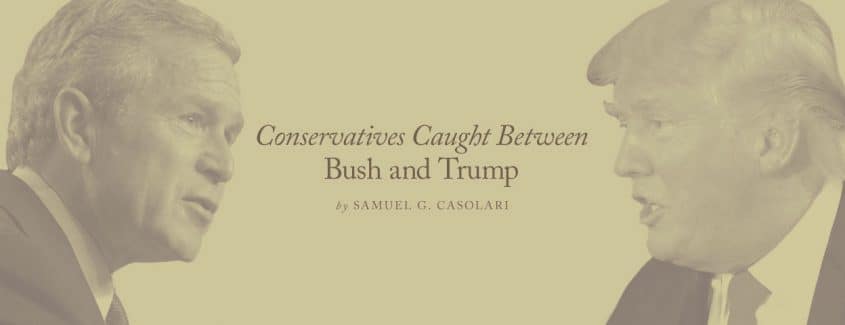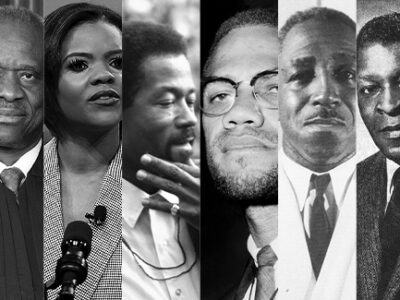
The U.S. Senate primary in Alabama among Roy Moore, Luther Strange and Mo Brooks was nothing more and nothing less than what is playing out within the Republican Party nationally.
Right or wrong, good or bad, Luther Strange represented the Bush wing of the Republican Party, while Roy Moore represented the insurgent Trump wing of the Republican Party (even as Trump himself earlier endorsed Strange rather than Moore—only to recently endorse Moore). Caught in the middle was the credible and consistent conservative, Mo Brooks. All three candidates were flawed, and the race was unfortunately influenced by national forces that essentially created Roy Moore, who himself was by no means a political athlete (just take a look at his past election and primary campaigns).
Mitch McConnell poured millions of dollars into Alabama to support Luther Strange and oppose both Moore and Brooks. Nothing could mobilize Roy Moore supporters more than that: the establishment coming out against an insurgent. All the while, the credible, consistent conservative got drowned out.
This will play out in other states as well, such as Arizona and Nevada, and indeed played out to one degree or another in past races in Delaware, Missouri, Nevada and elsewhere. The big losers have been consistent conservatives and conservative ideas and ideals.
Conservatives are caught in the middle. How did they get here?
First, the Republican electorate has changed. As the Democrats moved to the left, many populist Democrats moved to the GOP. Though many of these voters have some conservative inclinations on some issues, and might support a conservative candidate, they are not necessarily conservative. They could easily vote for Reagan or Bill Clinton in the South, or even Obama or Trump in the North. These voters were not typical Republican suburban voters but rather new voters with different agendas. Conservatives need to address their issues and concerns.
Second, the overall political direction of these voters are populist and not necessarily conservative. Fueled by economic concerns over immigration, trade, manufacturing jobs, globalism, and the pace of social change, these voters did not match the traditional Chamber of Commerce republicanism. They distrust not simply elites but the symbols of elitism such as the county club, the social set, the board room, and political correctness. In the North these voters were wed to the local union hall, the parish church, and the powerful symbols of the New Deal. In the South, they were the mill workers in small towns distrustful of the far off big banks, big unions, and coastal opinion that seems to scorn their lives and communities.
Third, these voters and their issues were treated with disdain. How many times were these voters called nativists when they raised legitimate questions of border security and illegal immigration? How many times were these voters tagged as protectionists when they questioned managed-trade agreements that pick winners and losers? How many times were these voters called isolationists when they questioned wars in far off places that never seem to end? Donald Trump successfully campaigned on issues that made these voters feel that they finally had their champion. They have been mobilized in a way like never before and disregard those they consider the establishment.
Fourth, conservatives were compromised by Bushism: The mix of a big government, globalist agenda wrapped in a conservative bow. After two Bush presidencies, many conservatives compromised their principles and voted for Medicare Part D, No Child Left Behind, and one spending bill after another. By 2008, conservatives had little to say and little to show. By the end of the first decade of the 21st century, conservatives were routed by the Democrats which set the stage for the Affordable Care Act and two Supreme Court appointments. The election losses of 2006 and 2008 decimated conservatives and conservatism. The clarity of the conservative message was compromised and clouded by so-called “compassionate conservatism” and a “kinder, gentler America.”

We value your friendship and strive to provide high quality scholarship and opinion editorials such as this article by our executive director Dr. Paul Kengor. If you enjoy our work we ask that you consider making a contribution to the Center to support our future work and programs. Please click here to make a secure online gift today.
Finally, the force and personality of Trumpism and Trump drowned out conservative candidates who far too often seemed hesitant or weak in advocating conservative principles or compromising too much.
Conservatives need to emerge from this middle act. Conservatives need to clearly and consistently articulate positions that are popular and appeal to working people. For instance, conservatives could start by proposing to cut or eliminate the gas tax, find ways to reward savings and investment among low- and middle-income taxpayers, and deregulate the energy industry to provide good-paying jobs with benefits.
Conservatives must stand for something and stand strongly or they will continue to be caught in the middle of the struggle between the Bush and Trump wings of the party.




